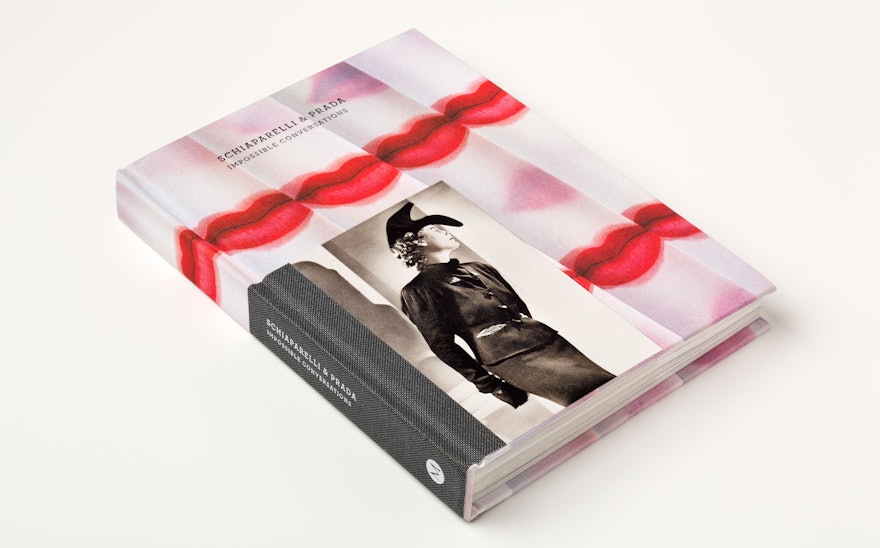Working in different eras, the Italian designers Elsa Schiaparelli and Miuccia Prada both subvert contemporary ideals of femininity, beauty and taste in their designs. Schiaparelli and Prada: Impossible Conversations, the spring 2012 exhibition at The Costume Institute of The Metropolitan Museum of Art, examines the affinities between the two iconic designers.
Pentagram has designed a catalogue for the exhibition that uniquely captures and extends the show’s juxtaposition of the two designers. The book presents over 200 archival and newly photographed images of the designers’ work, and includes a smaller “book within a book” that features the “impossible conversations” between the two women. Schiaparelli and Prada both share a love of Surrealism and surprise, and the book itself has been conceived as an unusual object that constructs a playful dialogue of images and commentary between two designers who never actually met.
The designers worked closely with Costume Institute curators Andrew Bolton and Harold Koda to develop a book that reflects the inventiveness of the two designers. Schiaparelli, practicing from the late 1920s to the early 1950s, and Prada, from the late 1980s to present, both have an active interest in art––Schiaparelli famously collaborated with Dalí and Cocteau, and Prada leads the Fondazione Prada, an arts foundation and exhibition space. In their work both designers have referenced uniforms and girlish dresses to subvert expectations of femininity; explored the influence of antiquity and Eastern cultures; and made use of Surrealistic practices like playing with scale, displacement and blurring the natural and artificial, reality and illusion. (The exhibition’s subtitle is inspired by Miguel Covarrubias’s “Impossible Interviews” for Vanity Fair in the 1930s, which once featured Schiaparelli in an imagined dialogue with Stalin.)
The book’s innovative structure functions on two levels. On one level, the book is a traditional picture book; there is a dialogue constructed between the images, and many spreads present facing photographs of works by Schiaparelli and Prada, inviting comparisons. On another level, the smaller “book within the book” bound within the larger images hosts the imaginary conversation between the two women, assembled of quotes from each on various subjects that tie into the exhibition themes (“Ugly Chic,” “Hard Chic,” “The Surreal Body,” etc.) The book’s table of contents appears on these smaller pages, introducing the reader to the format woven into the book.
The presentation is understated, but has a subversive, deconstructed quality that ties into Schiaparelli and Prada’s work. Each spread stages its own dialogue, between the facing images and the inner book, which presents a running commentary and narrative by Schiaparelli and Prada, as well as images of alternate views, details or historical reference. In some spreads, all three frames are engaged––the two facing pages and the inner little book––in a “triangle” of conversation.
As a physical object the catalogue also has a Surrealist quality and is highly interactive. The book is presented in an unique size that is accessible and convenient––smaller than a typical museum catalogue, with a literary scale, like a novel––but large enough to feature lush, exquisite images. At the same time, the book is tactile and easy to handle, almost like a clutch. The cloth cover pictures a Prada pattern of surrealistic lips, with a smaller inset image that acts as the “cover” of the book-within-book. A cloth spine wrapped over the book’s true spine suggests the construction techniques of the fashion designers. The typeface used throughout the book is Neutra Slab.
Pentagram previously designed the catalogues for Superheroes: Fashion and Fantasy, PUNK: From Chaos to Couture, and China: Through the Looking Glass.

